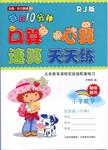题目内容
根据下面短文内容,在短文的空格处填上一个恰当的词,使短文完整、通顺。
“Cool” is a word with many meanings. Its old meaning is 1. to express a temperature that is a little bit cold. As the world has changed, the word has had many different 2. . “Cool” can be used to express feelings of interest in almost anything.
3. you see a famous car in the street, maybe you
will say, “It’s cool.” You may think, “He’s so cool,” when you see your
favorite footballer. We all maximize(最大化) the meaning of “cool”. You can use it 4. of
many words such as “new” or “surprising”. Here’s an interesting story we can
use to show the way the word is used. A teacher asked her students to write
about the waterfall(瀑布) they had visited. On one student’s paper
was just the one sentence, “It’s so cool.” Maybe he thought it was the 5.
way to show what he saw and felt.
the meaning of “cool”. You can use it 4. of
many words such as “new” or “surprising”. Here’s an interesting story we can
use to show the way the word is used. A teacher asked her students to write
about the waterfall(瀑布) they had visited. On one student’s paper
was just the one sentence, “It’s so cool.” Maybe he thought it was the 5.
way to show what he saw and felt.
But the story also shows a scarcity(缺乏) of words. 6. “cool”, some people have no words to show the same meaning. Can you think of many 7. words that make your life as colorful as the word “cool”? I can. And I think they are 8. very cool.
1.used/just/only
2.meanings
3.When/If
4.instead
5.best/coolest
6.Without
7.other
8.also/all
【解析】
试题分析:本文讲述了“Cool”一词的意思及用法。“Cool”这个词已经由原来的最初表达气温的意思演变成了许多新的意思,并且在生活中得到了广泛的应用。
1.句意:“Cool”的最初的意思是用来表达气温有点冷。或者用be only to(仅仅是)或be just to(只是)表达;故答案为used/just/only
2.句意:随着社会的发展,这个词也有了更多的意思。本段都是针对“Cool”的意思展开讨论的,故答案为meanings
3.句意:当你在街上遇到一辆名车时,你可能会说“太酷了”。本句用when引导时间状语从句或者用if引导的条件状语从句均可;故答案为When/If
4.句意:你可以使用它而不是使用许多新词比如“新的”“令人吃惊的”等。本句表达“Cool”这个词的使用广泛性;故答案为instead
5.句意:或许他感到那是用来表达他所看到或感觉到的最佳的表达方式。用“Cool”来表达对观看瀑布之后的感觉是一种最好的方式;故答案为best/coolest
6.句意:离开“Cool”这个词一些人没有其他词汇来表达相同的意思。表达没有用without;故答案为Without
7.句意:你还能想出许多其他的词汇和“Cool”一样都能使你的生活丰富多彩的词吗。本句是针对和“Cool”相异的其他词汇的用法;故答案为other
8.句意:而且我认为他们也是/都是很酷的的。其他的词汇同样都能表达丰富多彩的意思;故答案为also/all
考点:短文填空。

 每日10分钟口算心算速算天天练系列答案
每日10分钟口算心算速算天天练系列答案A)根据下面短文内容,在文章后小题的空格里填入适当的词语,
注意:每空一词。
Different cultures make different families. For example, there are differences in the way Chinese and Americans raise children.
First, Chinese and American families have different attitudes towards independence (独立). Each Chinese child has been considered to be the apple of parents’ eyes. It is not surprising to see Chinese parents always helping their children with getting dressed, having meals, bathing, and other things. American parents, on the other hand, teach their children how to do things alone from childhood.
Second, most Chinese parents often make their children have extra classes, such as piano, drawing, or singing lessons. Parents want their children to develop in an all-round way and be better students than other children. The problem is that their children may not be interested in these classes. American parents try to respect (尊重) their children’s interests and usually don’t make them do what they don’t like.
Third, there is a difference in the way parents in China and American treat mistakes that children make. Many Chinese people believe in the saying, “Spare the rod, spoil the child (不打不成器).” When Chinese parents see their children make mistakes, they often get very angry, some even hit them instead of making them realize their mistakes. This affects the children’s growth and the forming of their character, and also makes the generations gap (代沟) wide. American parents think it is common for people to make mistakes because mistakes are a part of life. They often say, “It’s OK to make mistakes. Making mistakes helps you learn.” They help their children deal with mistakes by giving them ideas about how to turn mistakes into learning opportunities (机会).
Families in China and America are quite different, and one way may seem better than the other, but it is better to think about whether the parents fit the family or not instead of talking about which one is wrong or right.
|
Comparisons |
Differences |
|
Different attitudes towards independence |
Chinese parents always try to do almost 1 for their children. |
|
American parents try to let their children 2 with things on their own from childhood. |
|
|
Different ways of treating children’s 3 . |
Chinese children are often made to go to 4 classes. |
|
American children are usually encouraged to do what they 5 . |
|
|
Different ways of treating children’s mistakes |
Chinese parents are 6 about children’s mistakes and often 7 them. |
|
American parents think everyone can make mistakes and they are a good 8 to learn. |
|
|
The author’s 9 |
|
|
Parenting styles should depend on what is 10 for the family. |
 Our eyes are very important to us. They are like cameras. We can see beautiful things and colors around us.
Our eyes are very important to us. They are like cameras. We can see beautiful things and colors around us.